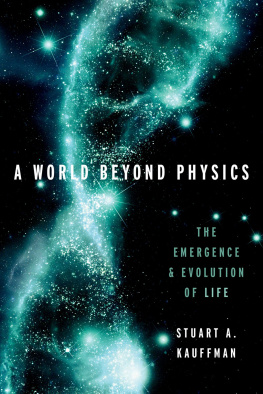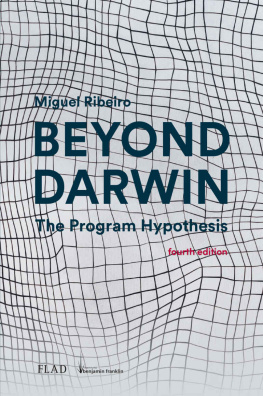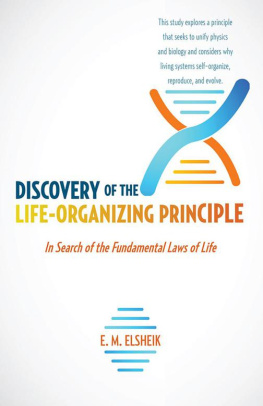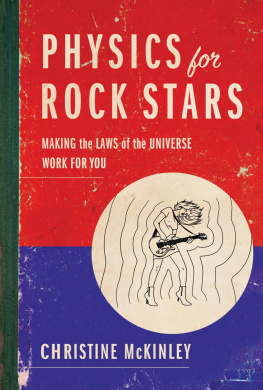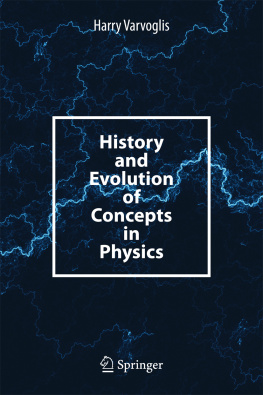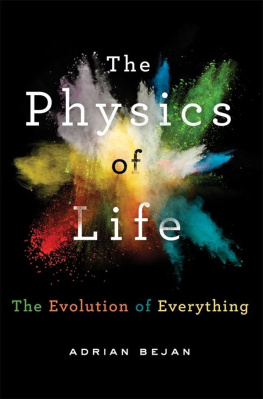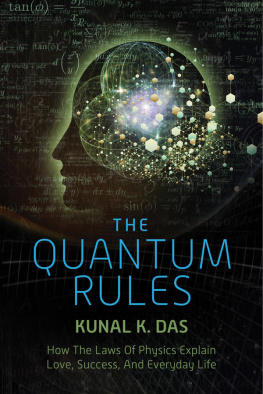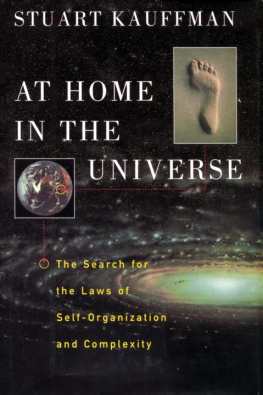A WORLD BEYOND PHYSICS

Oxford University Press is a department of the University of Oxford. It furthers the Universitys objective of excellence in research, scholarship, and education by publishing worldwide. Oxford is a registered trade mark of Oxford University Press in the UK and certain other countries.
Published in the United States of America by Oxford University Press
198 Madison Avenue, New York, NY 10016, United States of America.
Oxford University Press 2019
All rights reserved. No part of this publication may be reproduced, stored in a retrieval system, or transmitted, in any form or by any means, without the prior permission in writing of Oxford University Press, or as expressly permitted by law, by license, or under terms agreed with the appropriate reproduction rights organization. Inquiries concerning reproduction outside the scope of the above should be sent to the Rights Department, Oxford University Press, at the address above.
You must not circulate this work in any other form and you must impose this same condition on any acquirer.
CIP data is on file at the Library of Congress
ISBN 9780190871338
eISBN 9780190871352
Contents
Classical physics, our gift from Newton, is our world written in the passive voice: rivers flow, rocks fall, planets orbit, stars arc in the space-time deformed by their masses. There are no doings, only happenings: myriad, miraculous, but brute.
I broach 78 years as I sit to write, having angled to the kitchen to pick out a nectarine to eat. Yesterday, I clambered aboard the Poised Realm, my 22-foot boat, to skiff across to the Crane Dock on Orcas Island to drive to Eastsound, Washington, to buy the nectarine I just retrieved as an afternoon snack. My heart thumps a bit, my own human heart. Most of my readers have a human heart as well.
Just where did my human heart, the nectarine, my kitchen, the boat, and Eastsound come from since the brute happening of the Big Bang 13.7 billion years ago?
Since Newton, we have turned to physics to assess reality: what is REAL. But physics will not tell us whence we come, how arrived, why the human heart exists, nor why I can buy nectarines in Eastsound, let alone what buying is.
We will talk of these things, for there is more to know than we know and more to say than we can say.
We are in a world beyond physics.
We are in a world of living creatures that construct themselves. Yet we lack the concepts to say it. A tree, from a seed, builds itself, launches itself upward toward the sun. We see it and do not yet know what to say. A forest builds itself, rooted, branched, quiet, as if longing. Our biosphere too grows in diversity into what it can become and has done so for some 3.7 billion years. A giraffe? Who knew three billion years ago? None could have known. And nectarines: Who could then have said?
We estimate that 50 to 90 percent of the 10 to the power of 22 (1022) stars in the known universe have planets cycling them. If, as I believe and will say, life is abundant, the universe is rife with becoming, based on physics but beyond any physics we know.
The concept of perhaps 1022 biospheres staggers me. Yes, we thrill at Hubbles image of billions of galaxies, some 1011 of them. But are there 1022 biospheres, ebullient like ours? Not a world beyond physics, but worlds beyond physics, as vast as the vastness of the physics we know, almost unknowable.
We miss in our science the idea of a system that constructs itself. I will introduce the requisite concept due to Mal Montvil and Mateo Mossio (2015) called Constraint Closure. These young scientists have found a, or maybe the, missing concept of biological organization. We will grow to understand it clearly and build on it. The ideas are a tiny bit complex, but not very. We will get to them. But for now we can think of constraint closure like this: it is a set of both constraints on the release of energy in non-equilibrium processes, and those processes, such that the system constructs its own constraints. This is an amazing idea. Cells do this, automobiles do not.
Living systems achieve this constraint closure and do what are called thermodynamic work cycles by which they can reproduce themselves. Living systems also exhibit Darwins heritable variation, so can undergo his natural selection, hence evolve. Ive written about that in some of my earlier books. But I was nagged by a feeling that there was something missing. With constraint closure a crucial puzzle piece is put into place.
But what evolves cannot be said ahead of time: what evolves emerges unprestatablyI know of no better wordand builds our biosphere of increasing complexity. We are its children: as are giraffes, nectarines, and sea cucumber.
Some years ago, at his 70th birthday fest, a physicist friend of mine smiled at the way biologists see the world. Were biologists with Galileo on the tower of Pisa, they would have dropped red stones, orange stones, pink stones, blue stones, green stones, and so on.
My physicist colleagues chuckled knowingly. Physicists seek to simplify to find laws, biologists to study how life became complex. So of course, the red stones were giraffes; the orange stones nectarines; the blue stones sea cucumbers; and the green stones, well, just us. The question is not whether the sea cucumber, giraffe, us, or the nectarine falls faster, but where did they come from in the very first place?
Physics wont say. No one knows.
There is a world beyond physics.
Darwin taught that new species drive wedges into the crowded floor of nature to make room for their own existence: yes, but no. Creatures, by existing, create the very conditions for other creatures to come into existence. Species constitute the very cracks in the floor of nature that constitute the niches for yet new species to come into existence, creating yet more cracks for still more species to spring forth.
The blossoming biosphere creates its own ever-new possibilities of becoming, yet more diverse and abundant.
The same holds, almost unnoted, for the exploding global economy. New goods create niches for yet further new goods: the invention of the World Wide Web created niches for selling on the Web, hence eBay and Amazon; which in turn created content on the Web, hence niches for search engines like Google; and for businesses that try to game, the search algorithms to sell more stuff. Or think of all the iPhone apps: and apps upon apps, like the ad blockers that remove the sales pitches from what Safari shows.
We stumble into the world we make possible as we lumber forward, with no or little insight or foreknowledge. I can go to Eastsound to buy nectarines.
We think that in physicsSpecial and General Relativity, Quantum Mechanics and Quantum Field Theory with the Standard Modelwe will find the foundations from which we can derive the world, the ultimate becoming. We cannot. The ultimate may rest on the foundations, but it is not derivable from them. This ultimate, an unknowable unfolding, slips its foundational moorings and floats free. As Heraclitus said, the World Bubbles Forth.
Since the triumphs of Descartes, Newton, and Laplace and the birth of classical physics, we have come to regard physics as the answer to our questions about what reality is. In that search, we have come to think of the world as a vast machine. This Newtonian fundamental framework is wonderfully extended by Special and General Relativity. Quantum Mechanics, and Quantum Field Theory, alter some of the basic deterministic aspects of classical physics but not the view of reality as an enormous machine.

